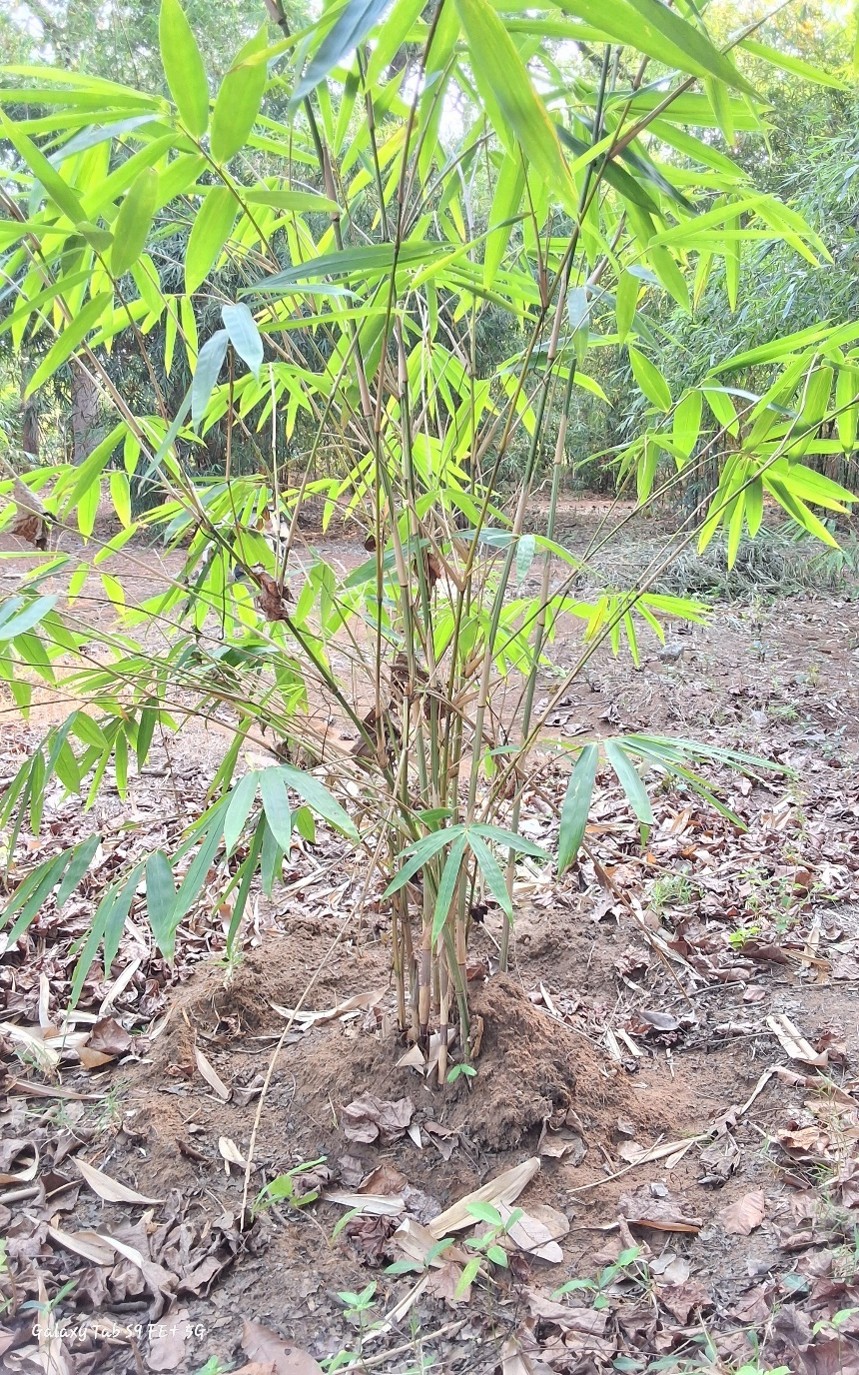Gigantochloa atter

Gigantochloa atter
Gigantochloa alter also known as Atter Bamboo, is a clumping bamboo species that is native to tropical forests in Southeast Asia, particularly in Indonesia and Malaysia. The bamboo grows in tropical lowlands and hill areas, generally between 200 and 1,500 meters above sea level. It thrives in moist, well-drained soils, preferring loamy soil types with a slightly acidic to neutral pH range of 5.5 to 7. This species requires high annual rainfall, typically between 1,500 and 2,500 mm, to support its growth in its natural habitat.
The culms of Gigantochloa atter are large and dense, reaching heights of 15 to 25 meters and diameters of 8 to 12 cm. The culms are dark green when young, sometimes turning yellowish with age. Internodes measure between 30 to 50 cm, and the culm sheath is green when young but becomes deciduous, with dense brownish hairs on the abaxial surface. The leaves are lanceolate, elongated, and pointed, measuring 20 to 30 cm in length and 3 to 5 cm in width. Their texture is slightly rough, and they have a glossy surface.
This bamboo species is widely used in construction for durable poles, scaffolding, and other structures due to its strength and thickness. It is also valued for its use in making furniture, particularly for high-quality products such as flooring. Additionally, it is used in traditional crafting, such as for baskets and mats. The young shoots of Gigantochloa atter are edible and consumed as a vegetable in certain regions. The bamboo is also used as firewood in rural areas.
Gigantochloa atter has a long flowering cycle, with flowers blooming after 40 to 60 years or more. Flowering is a rare event, and when it occurs, it is typically observed in wild populations rather than in cultivated stands. The bamboo produces very few seeds, so propagation is primarily through vegetative methods such as culm cuttings, clump division, and tissue culture.
In terms of habitat, this species is native to Indonesia and Malaysia, but it has also been introduced to some regions of Southeast Asia for commercial use. It is particularly appreciated for its versatility in construction, furniture making, and handicrafts.
Listen Audio:
Need assistance? BRTC Faculty